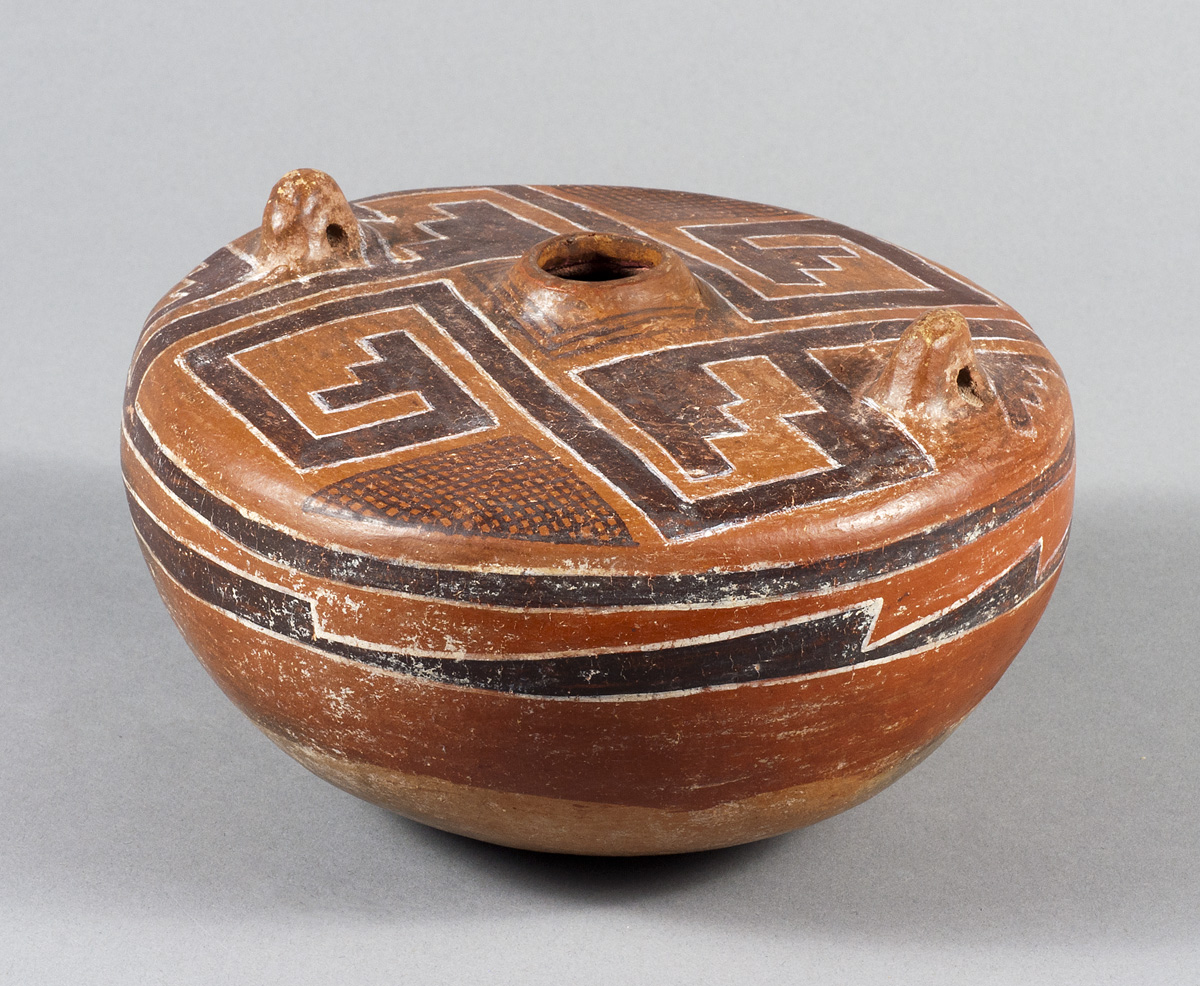Kiet Siel Polychrome is a type of Tsegi Orange Ware for which the center of production is believed to have been in Marsh Pass and the Tsegi canyons in Navajo County, Arizona. Like most other Tsegi Orange Wares, this type was widely traded.
Archaeological Culture: Ancestral Puebloan
Date Range: Kayenta Heartland: A.D. 1250-1320 (Christenson 1994), Flagstaff Region: A.D. 1250-1290 (per Christian Downum, Northern Arizona University).
Construction: By coiling.
Firing: In an oxidizing atmosphere at the end of the firing process.
Core Color: Dark gray to light gray, brownish to pink.
Temper: About equal amounts of quartz sand and crushed sherd.
Surface Finish: Bowl surfaces sometimes bumpy, polished on interior and sometimes exterior; scraping marks often conspicuous on exterior; sometimes compacted.
Surface Color: Maroon red slip; surface color and core contrast only where slipped.
Forms: Jars predominate, bowls uncommon; bowls have horizontal handle.
Vessel Thickness: 3.8 to 7.6 mm; average 5.5 mm (jars).
Decoration:
- Paint: Black and white on red slip.
- Pigments: Black: manganese, white: kaolin, red: hematite.
- Design: Bowl interiors: black stripes and hachures or rectangular cross-hachures in rectangular or triangular panels, stripes and panels outlined with narrow white line; exterior: if unslipped, sometimes horizontal red stripes encircling vessel jar below rim; rim usually black painted line. Jar decoration exterior only, black stripes, solid stepped elements, horizontal or diagonal hachures in rectangular, triangular, circular, or stepped panels; wide staggered lines in series in horizontal panels; hatched panels, framed in black lines of about same width as hachures; stripes, panels, solid elements outlined by narrow white lines; rims usually black painted lines.
Comparisons: Tucson Polychrome has crystalline rock temper.
Other Names: Polychrome Ware
Compiled from the following sources:
Christenson, Andrew. (1994) A Test of Mean Ceramic Dating Using Well-Dated Kayenta-Anasazi Sites. Kiva 59(3).
Colton, Harold. (1956) Pottery Types of the Southwest. Museum of Northern Arizona Ceramic Series No. 3. Flagstaff, Arizona.
Compiled by:
April Peters, Northern Arizona University Anthropology Laboratories.

